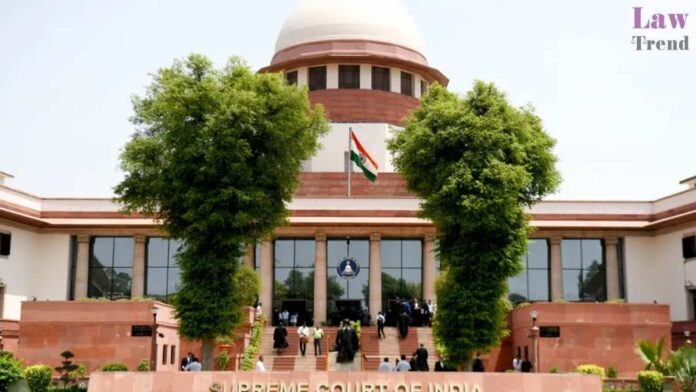In a striking revelation, an RTI query has found that the Supreme Court’s glass partitions — installed at a cost of ₹2.6 crore during the tenure of former Chief Justice of India (CJI) D.Y. Chandrachud — were dismantled within a year at an additional cost of ₹8.6 lakh.
The information, obtained by India Today journalist Ashok Kumar Upadhyay, has spotlighted the substantial public expenditure involved in installing and then removing the glass panels that had redefined the visual and spatial landscape of India’s highest court.
During his tenure as CJI from November 2022 to May 2025, Justice Chandrachud introduced several reforms to modernise the Supreme Court. One of the most visible among them was the installation of glass partitions along the historic corridors outside the first five courtrooms. This move aimed to facilitate centralised air conditioning and improve the infrastructure, reflecting his broader vision to modernise judicial spaces.
However, the move was met with strong opposition from the Bar. Both the Supreme Court Bar Association (SCBA) and the Supreme Court Advocates-on-Record Association (SCAORA) raised concerns that the partitions narrowed corridor space, caused congestion, and hampered the free movement of lawyers during busy court hours. Moreover, they criticised the lack of consultation with the Bar, despite its central role in the court’s functioning.
After Justice Chandrachud’s retirement, the SCBA formally requested his successor, CJI Sanjiv Khanna, to remove the glass panels. While no immediate decision was taken during Justice Khanna’s short tenure, the matter was promptly addressed after Justice B.R. Gavai assumed office as Chief Justice.
Justice Gavai committed publicly to restoring the Supreme Court’s corridors to their original state. A Full Court meeting — involving all Supreme Court judges — was convened, and it was unanimously decided to dismantle the glass partitions. The removal was completed in June 2025.
According to the RTI response, the glass installation project cost ₹2,59,79,230 and was carried out by contractor M/s B.M. Gupta & Sons through an online e-tendering process via the Central Public Works Department (CPWD) portal. The removal of the panels cost an additional ₹8,63,700. In total, ₹2.68 crore was spent from the Supreme Court’s infrastructure development budget — an amount ultimately borne by the Indian taxpayer through the Union budget allocated to judicial services.
The Supreme Court administration clarified that the decision to remove the glass partitions was a collective one, not solely the directive of the new CJI.
The dismantling of the glass partitions is not the only reversal of the Chandrachud-era changes. Justice Gavai also restored the Supreme Court’s original logo featuring the State Emblem of India, which had been altered during September 2024 under Justice Chandrachud’s tenure.
Source: India Today




